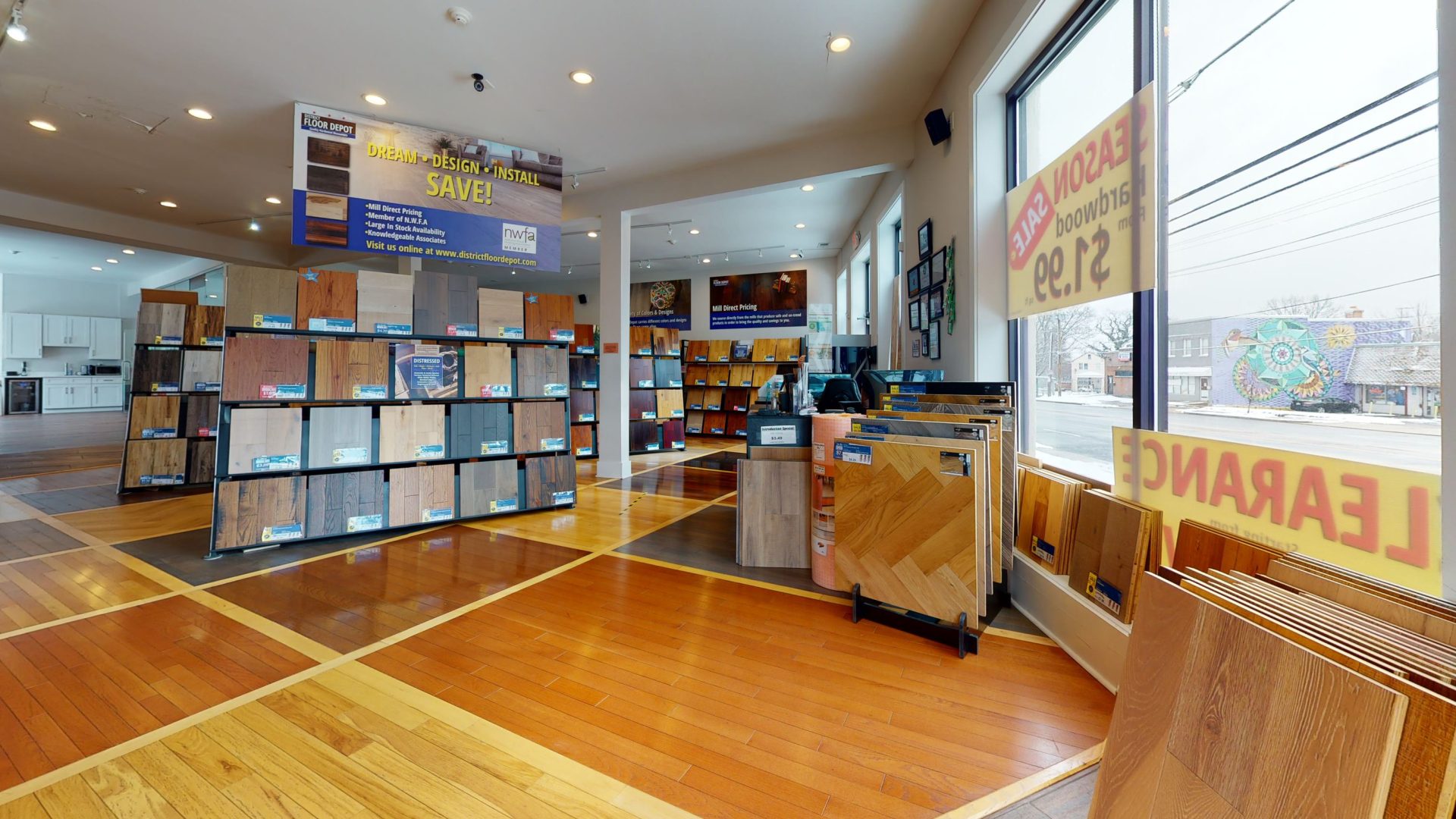Light vs. Darker Colored Hardwoods: The Ins and Outs of Light Hardwood Floors
- Published By: District Floor Depot

Choosing hardwood floors for your home is a big decision. The costs involved in both procuring the product and its installation are significant, and the flooring type itself requires quite a bit of care to ensure homeowners protect it and get the most from their investment. It’s not a decision to be taken lightly, but knowing what you want from the product will provide significant help in determining which type of flooring is best for your home.
This guide explores many aspects of lighter hardwood flooring, including a more in-depth look into the many varieties, the interior design options that work best with lighter woods, and how lighter hardwoods hold up against everyday life.

Light Hardwood Floor Varieties
Ash — With graining like oak, but not quite as hard concerning durability, ash is less popular though still used as a light wood hardwood flooring.
Bamboo — A lighter flooring choice, bamboo is technically a grass and a renewable hardwood source that regrows quickly. It is less durable regarding wear and tear, softer than other options, cannot be sanded or refinished, and is difficult to stain and protect with polyurethane sealants.
Birch — Light and smooth grained, birch is difficult to stain and yellows without the protection of a water-based poly sealant.
Maple — The lightest of light hardwoods, maple boasts smooth graining, a more expensive price tag, and both soft and hard varieties. Its color varies by grade, with clear grade as the most costly. Lower grade maple has a greater number of knots and more color options.
Red oak — This is the most common and abundant hardwood variety in the U.S. It’s also the lightest variety, and includes pinkish undertones and stronger graining than other light woods.
White oak — Slightly darker and possessing a more golden hue, white oak is also a little harder and more durable than its red oak counterpart. It also tends to have more mineral streaks, meaning it’s a little more modern and works better with whitewashes.
Design Logic: Why Choose Light Hardwoods Over Dark
Selecting a lighter wood over a darker one really comes down to what you’re looking to achieve from both a durability standard and a design aesthetic. The upside of lighter hardwoods is that most can be stained to a darker color. If you’re looking for a lighter or reddish hue to your hardwoods or using multiple stains to go with a multidimensional look, a lighter hardwood is your best bet for achieving that end result. It’s also the best option if you’re hoping to go with a white-washed or light gray floor tone, as a natural light hardwood floor produces the lightest traditional look you can achieve.
In terms of which designs work best with lighter woods, the good news is they’re incredibly versatile. The most traditional hardwood flooring tends to be on the lighter side, and ultra-modern and minimalistic designs work well, too. Open concepts that are lighter colored, with white walls and modern light finishes, look even more open and spacious when paired with lighter flooring. Light hardwoods also pair well with dark cabinets in kitchens, providing a nice contrast and making the space feel bigger.
How Light Hardwoods Stand Up Against Wear and Tear
Light hardwoods’ durability depends on the wood in question, the protective polyurethane sealcoat applied, and several environmental factors. As they are lighter in color, lighter hardwoods tend not to show scratches and scrapes as predominantly as darker woods, simply because there isn’t the contrast between the light scratch and dark stain. Appropriately applied poly coats protect hardwoods of all colors from scratches, scrapes, gouges, and other surface abrasions.
Adding pads to the bottom of furniture legs, using runners in high-traffic areas, abstaining from wearing cleats or high heels in the house, trimming pet nails, cleaning up water and other spills quickly, and using window coverings to ensure minimal sun damage all go a long way toward protecting them, too.
In short, light hardwoods stand up just as well as darker hardwoods, except for bamboo. They require proper care, but can be maintained, re-sanded, re-stained, re-sealed and kept for decades.
Questions or Concerns?
Contact District Floor Depot, your local flooring expert. Our team is available to address any questions or concerns you might have when choosing light hardwood floors. Whether you’ve decided to go with light woods or are on the fence about them, we’re happy to help you understand your investment and what to expect.
